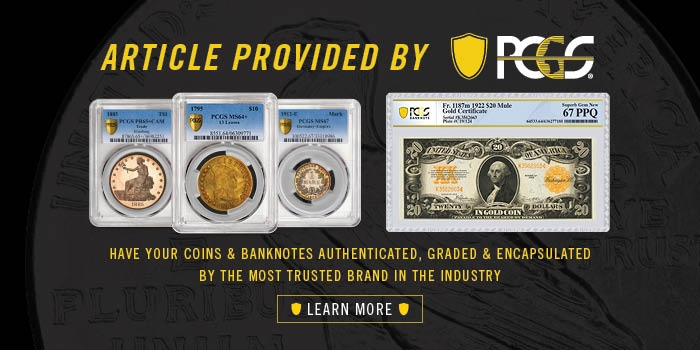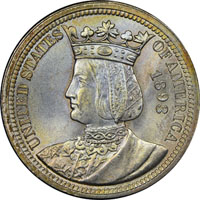By Vic Bozarth for PCGS ……
Continuing my series on the World’s Fair expositions held between 1876 and 1926, we move to the year 1893 and the Columbian Exposition, by which point the United States Mint had been producing circulating coins for a century. Although the Mint had produced medals for the 1876 Centennial Exposition in Philadelphia, among other special occasions, United States commemorative coins in the formal sense were a new idea.
The U.S. Mint in Philadelphia, the headquarters of minting operations for the United States, produced many different coins and medals. The predominant duty of the United States Mint is to provide coins to be used in commerce by their citizens. However, the Philadelphia Mint had not only the most resources but also exceptionally skilled staff who wanted to show others what they could do.
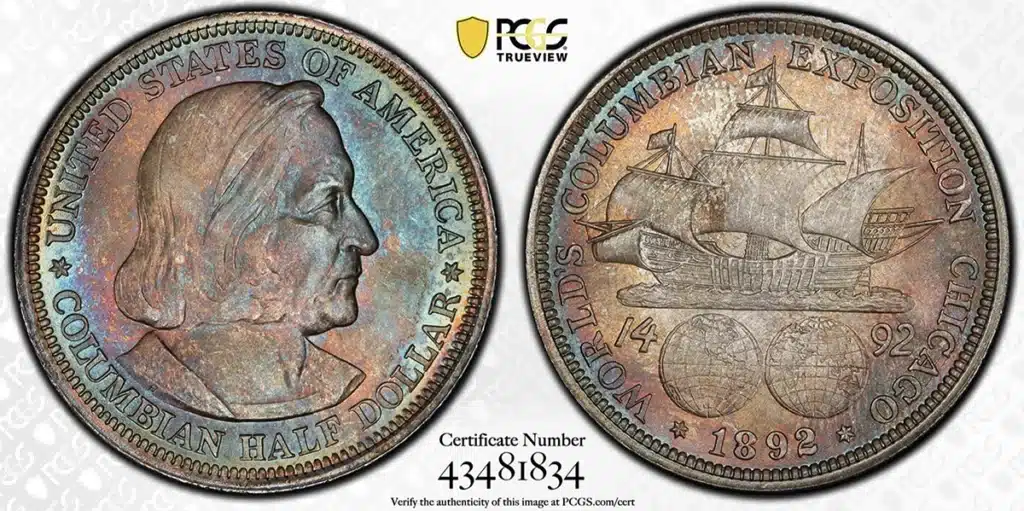
The U.S. Mint produced both the 1892 and 1893 Columbian Exposition Half Dollars as well as the 1893 Isabella Quarter for the Columbian Exposition. Perhaps the most well-known classic commemorative half dollar, issued in both the 1892 and 1893, the Columbian Expo Half Dollars were produced in such large numbers that some were returned to circulation after the fair. The issue prices of 75 cents for the Isabella Quarter and $1 for the Columbian Half Dollar were too steep for many fairgoers.
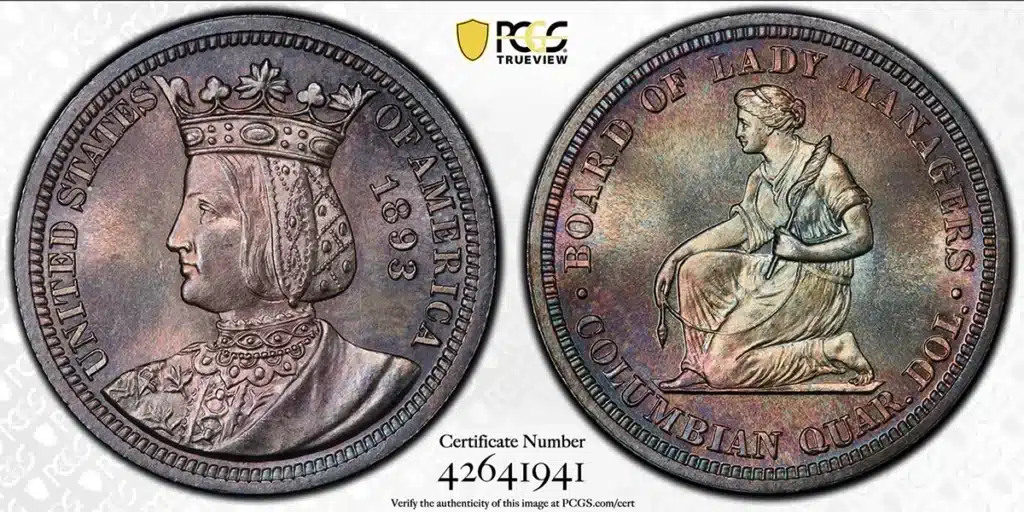
Even today, circulated examples of either half dollar are available for $25 to $30, but the Isabella Quarter wasn’t as copiously produced. Circulated examples in grades between XF40 and AU50 can bring more than $200. Examples of all three coins related to the Columbian Expo are much more valuable in uncirculated grades.
The Official Columbian Exposition Medal
The official medal for the Columbian Exposition was struck by the U.S. Mint. There was one major design type that today is defined by two varieties based on the size of lettering – large letters and small letters.

Both varieties were made in brass, but an estimated three or four Proof aluminum specimens of the large-letter variety strikes are known.
Large Letters
- PCGS #642418, HK-154 (Rarity-2)
- PCGS #642419, HK-154a (R-9)
Small Letters
- PCGS #642420, HK-155 (R-2)
The Saint-Gaudens Columbian Exposition Award Medal
There was a growing amount of dissatisfaction with America’s coinage during the late 19th century. In terms of coinage from other world powers, some considered the coins of the United States to be dull and old fashioned. American artist Augustus Saint-Gaudens, who was on the sculpture board of the Columbian Exposition, was awarded the contract to design the Columbian Awards Medal. The whole idea was to create a design that could compete favorably with European sculptors.
The Augustus Saint-Gaudens Dollar design was completed near the end of the Exposition in 1893, but due to administrative matters it wasn’t ready for its official presentation until 1896. The Saint-Gaudens Dollar, cataloged as PCGS #642541 and HK-223, is a 38-millimeter copper medal produced carrying award-winning designs from both Saint-Gaudens (obverse) and United States Mint Chief Engraver Charles Barber (reverse).
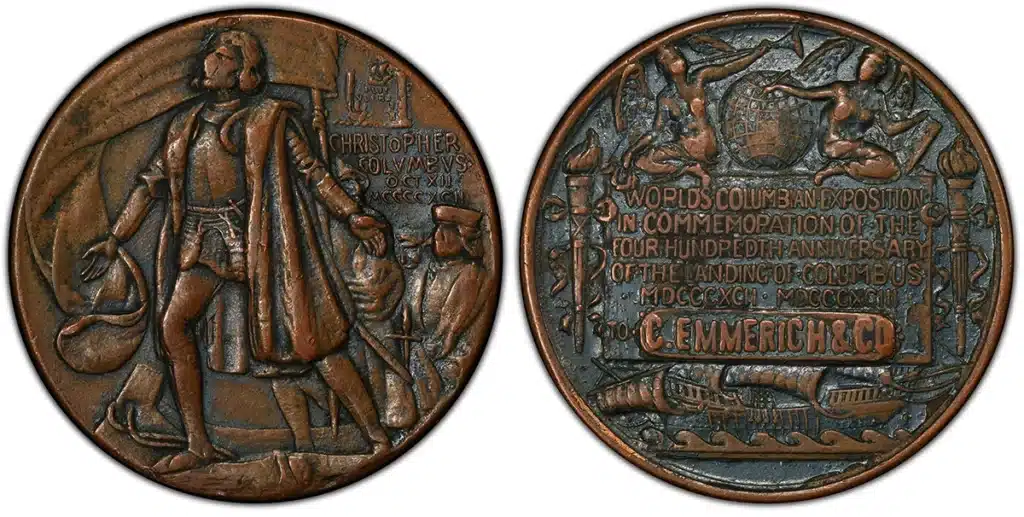
The hub and dies for the medal were produced at the Philadelphia Mint but the striking was done by the Scovill Manufacturing Company of Waterbury, Connecticut. These award medals were presented in velvet-lined aluminum presentation cases with elaborate filigree work.
Other Columbian Exposition Coins and Pieces
Commercially and promotionally, the Columbian Exposition also unleashed a tidal wave of tokens, medals, exonumia, and varied advertising items covering nearly every medium available at that time. Promotional and advertising items were distributed by the thousands. Souvenirs made of aluminum were quite popular because of their unusual light weight. The novelty of the metal, as being so much lighter than other metals, made aluminum-based medals and tokens good sellers.
While there were three coins and two medals produced by the U.S. Mint for the Columbian Exposition, the number of So-Called Dollars issued in relation to the fair were quite numerous. So-Called Dollars numbered HK-156 through HK-243c are all Columbian Exposition issues.
A breakdown of the different categories of Columbian Exposition-related So-Called Dollars is listed below. Take special note of the New Aluminum Dollars, Exhibition Palace Dollars, and Columbus Bust Dollars for the large number of issues just these three categories represent.
- Declaration of Independence Dollar: HK-156 & 157
- Discovery of America Dollar: HK-158
- New Metal Aluminum Dollars: HK-159-162a
- Bird’s Eye View Dollars: HK-164-167b
- Chicago Dollars: HK-168 & 169
- Ferris Wheel Dollars: HK-170-173
- World Globe Dollars: HK-174 & 175
- Exhibition Palace Dollars: HK-176-206a
- Statue of Liberty Dollars: HK-207 & 208
- Columbus Tower/Interstate Dollar: HK-209
- State Dollars: HK-210-219
- Liberty Head Dollars: HK-220-222a
- Saint Gaudens Dollar: HK-223 (Struck by the U.S. Mint)
- Columbus Bust Dollars: HK-224-236a
- Uniface Dollars: HK-237 (237a-237e)
- Columbus Statue Dollars: HK-238 & 239
- Female Figure Landing Dollar: HK-240
- Trinity of Heroes Dollar (Babe Ruth): HK-241
- McCormack Reaper Dollars: HK-242 & 243
- Board of Lady Managers Dollar: HK-243c
- Director-General Dollar: HK-243b
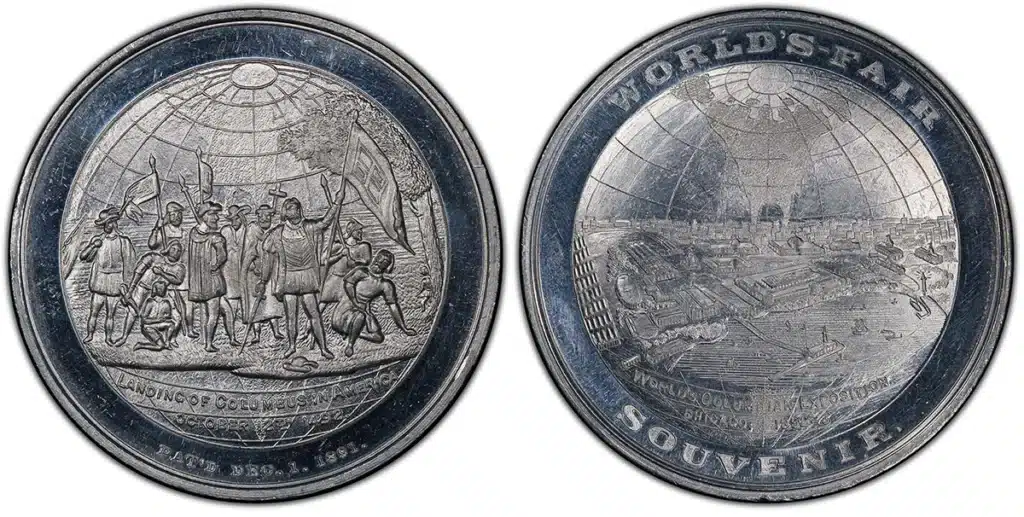

Promoting the Columbian Exposition Coins and Medals
Many reference books on the Columbian Exposition have been written, but the two most pertinent to numismatists are Nathan Eglit’s Columbiana as well as Columbian World’s Fair Collectibles by Howard M. Rossen and John M. Kaduck. Both books are decades out of print, but their information, as well as that in So-Called Dollars by Harold E. Hibler, Charles V. Kappen, and Tom Hoffman, et al., are all relevant and currently what is available.
Once the Columbian Exposition was proposed, there was a massive groundswell of interest from an amazing cross-section of our country and indeed the world. Whether it be technology, science, commercial, cultural, or just general interest, international expositions like the World’s Fairs generated publicity like no other venue at that time. Remember, other than the printed word, there was no radio or television at the time. There wasn’t even widespread use of film to promote or record events.
Unsurprisingly, the Ferris Wheel, first introduced to the world at the Columbian Exposition, was a big hit. The grounds themselves were lavishly manicured and attended. Attention to detail in every medium was important. After all, the U.S. was putting on a show, so to speak.
The artwork and decoration of the era and the exposition itself are fascinating. Take, for example, the tickets for the Columbian Exposition, or a couple of the original holders in which the Columbian Commemorative Half Dollars were sold.
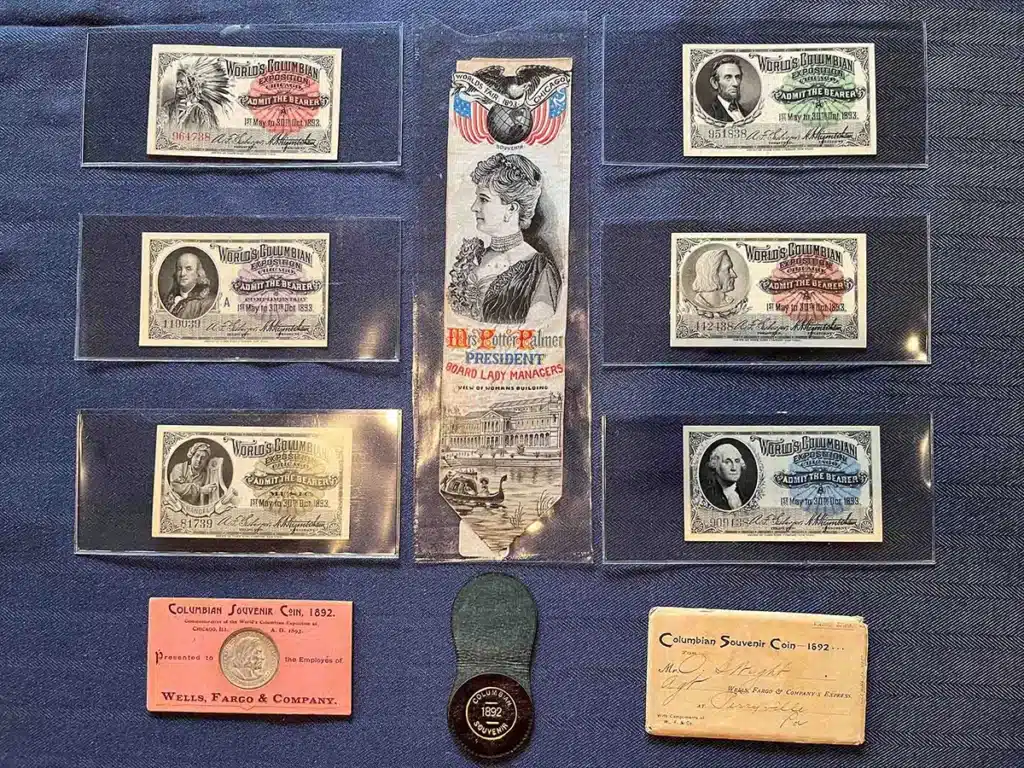
* * *
For more information from PCGS, click on the image below.
* * *
The post Columbian Exposition Coins and Medals Struck by the U.S. Mint appeared first on CoinWeek: Rare Coin, Currency, and Bullion News for Collectors.
